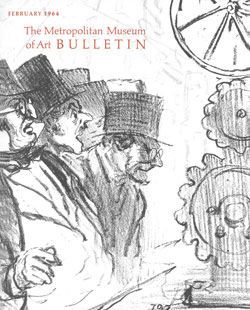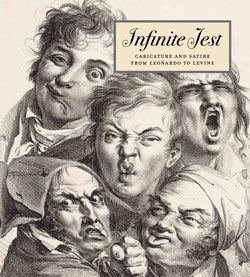Characters and Caricaturas
Not on view
When Hogarth designed this image in 1743, caricature was an Italian mode still little known in Britain. The London printmaker Arthur Pond had begun, in 1736, to issue etchings based on caricatures by Pier Leone Ghezzi, Annibale Carracci, Carlo Maratti, and Guercino, choosing for the most part robustly grotesque examples. Hogarth found Pond's prints distasteful and created "Characters and Caricaturas" to warn against what he saw as a debased foreign form. This first state, which served as a receipt for subscribers to his "Marriage a la Mode" series of engravings (1745), condemns exaggeration and elevates naturalism, the latter begin for Hogarth, a preeminent goal. A panel at the bottom establishes a basic dichotomy: three heads after Raphael, representing an acceptable physiognomic range for character, are contrasted with a row of repellent caricatures derived from Ghezzi, Carracci, and Leonardo. Above, further examples of character are provided by a cloudlike arrangement of profiled male heads in a tiered format resembling caricature drawings by Annibale Carracci. Hogarth's image proved influential in an ironic sense. Rather than dissuading British artists from using caricature, it demonstrated how the genre might be employed with greater subtlety. When later masters such as Rowlandson and Gillray mixed caricature with satire, they generally worked in a range that Hogarth would have called character.
Due to rights restrictions, this image cannot be enlarged, viewed at full screen, or downloaded.





